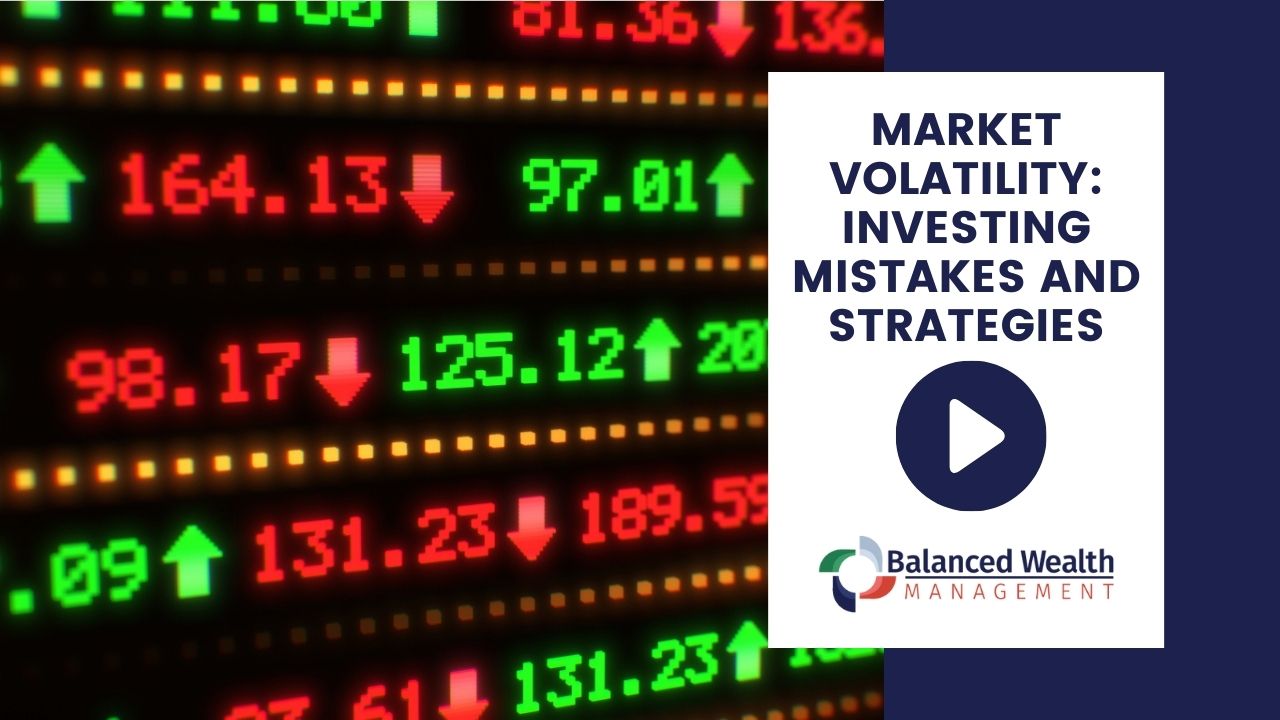Navigating Market Volatility: Strategies For Individual Investors

Table of Contents
Understanding Market Volatility and its Causes
Market volatility refers to the rate and extent of price fluctuations in financial markets. Understanding its causes and types is the first step in navigating market volatility effectively.
Identifying the Different Types of Volatility
Volatility manifests in different forms, impacting investor portfolios in various ways.
- Short-term Volatility: Characterized by rapid price swings over short periods (days or weeks), often triggered by news events, earnings reports, or unexpected economic data releases. Examples include a sudden drop in the market following an unexpected interest rate hike by the Federal Reserve, or a spike in response to a geopolitical crisis.
- Long-term Volatility: Represents sustained periods of either high or low price fluctuations over months or years. This is often driven by broader economic cycles, technological disruptions, or significant shifts in investor sentiment. For example, a prolonged economic recession can lead to sustained market downturn, while a period of rapid technological advancement may fuel a prolonged bull market.
- Cyclical Volatility: Relates to the regular ups and downs inherent in the economic cycle—periods of expansion and contraction. These cycles are often predictable, although the timing and intensity can vary.
- Structural Volatility: Refers to more fundamental shifts in the market landscape, such as deregulation, technological breakthroughs, or significant geopolitical changes that reshape long-term market dynamics.
The VIX (Volatility Index), often referred to as the "fear gauge," is a key market indicator that measures expected volatility of the S&P 500 index over the next 30 days. A higher VIX indicates higher expected volatility and increased investor uncertainty.
Recognizing Your Risk Tolerance
Before implementing any strategy for navigating market volatility, it's essential to understand your own risk tolerance. This involves assessing your comfort level with potential investment losses.
- Conservative: Prioritizes capital preservation over high returns; typically invests in low-risk assets like government bonds and high-quality fixed-income securities.
- Moderate: Balances risk and return, diversifying across various asset classes to manage risk while aiming for moderate growth.
- Aggressive: Willing to accept higher risk for the potential of greater returns; often invests a larger proportion of their portfolio in equities and other higher-risk assets.
Several online risk tolerance questionnaires can help you determine your risk profile. Understanding your risk tolerance will guide your investment decisions and help you navigate market volatility more effectively.
Diversification Strategies to Mitigate Risk
Diversification is a cornerstone of effective risk management. By spreading your investments across different asset classes, sectors, and geographies, you can significantly reduce the impact of market volatility.
Asset Allocation
Diversifying across various asset classes is crucial for reducing overall portfolio risk.
- Stocks: Offer higher growth potential but are generally more volatile.
- Bonds: Provide relative stability and income but offer lower growth potential.
- Real Estate: Can offer diversification benefits and potential for capital appreciation, but liquidity can be lower.
- Commodities: Provide exposure to raw materials; their prices can be influenced by supply and demand factors and global economic conditions.
A well-diversified portfolio might include a mix of stocks, bonds, and real estate, with the proportions tailored to your risk tolerance.
Sector Diversification
Focusing solely on a single industry sector exposes your portfolio to significant risk if that sector experiences a downturn. Diversification across different sectors reduces this sector-specific risk.
- Technology, healthcare, energy, consumer staples, and financials are just a few examples of broad industry sectors.
Geographic Diversification
Investing in companies and assets located in different countries can help to mitigate risks associated with specific national economies.
- International ETFs or mutual funds are effective ways to achieve geographic diversification.
Practical Strategies for Navigating Volatile Markets
Beyond diversification, several practical strategies can help you manage market volatility.
Dollar-Cost Averaging (DCA)
DCA involves investing a fixed amount of money at regular intervals, regardless of market fluctuations. This reduces the risk of investing a lump sum at a market peak.
- How it works: Invest a set amount every month or quarter, buying more shares when prices are low and fewer when prices are high.
- Advantages: Reduces emotional decision-making and mitigates the risk of timing the market.
- Disadvantages: May not result in the highest possible returns if the market consistently rises.
For example, if you invest $500 per month in a stock, you'll buy more shares when the price is $25 and fewer when it's $50.
Rebalancing Your Portfolio
Regularly rebalancing your portfolio involves adjusting your asset allocation back to your target percentages. This involves selling some assets that have performed well and buying more of those that have underperformed.
- Rebalancing should be done periodically (e.g., annually or semi-annually), to maintain your desired risk profile.
- It helps to capitalize on market inefficiencies by selling high and buying low.
Staying Informed and Avoiding Emotional Decisions
Staying informed about market trends is essential, but it's crucial to avoid emotional decision-making. Avoid panic selling during downturns or chasing short-term gains during market rallies.
- Reliable sources for financial news include reputable financial news outlets, economic reports from government agencies and independent research firms.
- Strategies for managing emotional responses include developing a long-term investment plan, sticking to your asset allocation, and seeking professional advice when needed.
Conclusion
Navigating market volatility requires a combination of well-defined strategies and emotional discipline. By understanding and implementing these strategies for navigating market volatility – diversification, dollar-cost averaging, portfolio rebalancing, and emotional discipline – you can build a more resilient investment portfolio and achieve your long-term financial goals. Start planning your investment strategy today! Remember, managing market volatility is an ongoing process, and adapting your approach as market conditions change is key to long-term success in reducing market volatility risk.

Featured Posts
-
 Another Strong Start Mets Pitcher Shows Continued Improvement
Apr 28, 2025
Another Strong Start Mets Pitcher Shows Continued Improvement
Apr 28, 2025 -
 Shift In Mets Rotation One Pitchers Rise To Prominence
Apr 28, 2025
Shift In Mets Rotation One Pitchers Rise To Prominence
Apr 28, 2025 -
 Uae Tourist Sim Card 10 Gb Data And 15 Off Abu Dhabi Attractions
Apr 28, 2025
Uae Tourist Sim Card 10 Gb Data And 15 Off Abu Dhabi Attractions
Apr 28, 2025 -
 Yankees Aaron Judge Matches Babe Ruths Legendary Record
Apr 28, 2025
Yankees Aaron Judge Matches Babe Ruths Legendary Record
Apr 28, 2025 -
 Trump Administrations Impact On Higher Education Nationwide
Apr 28, 2025
Trump Administrations Impact On Higher Education Nationwide
Apr 28, 2025
